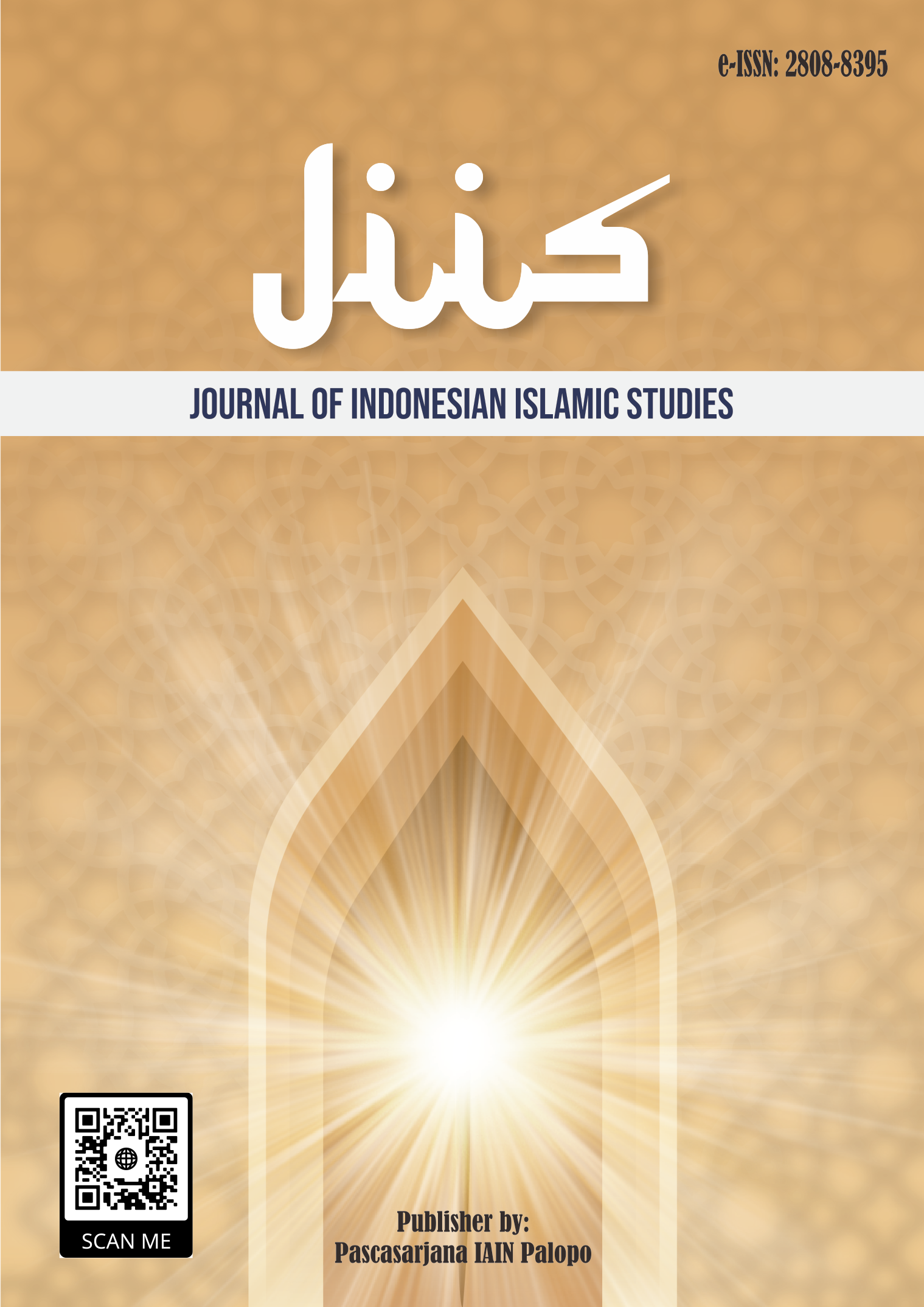The Symbolic Meaning’s of the Mamminaraje’ Commemoration Tradition of the Bugis Bone Tribe Community
DOI:
https://doi.org/10.24256/jiis.v3i2.4939Keywords:
Isra' Mi'raj, Mamminaraje', BugisAbstract
This article discusses the symbolic meaning of the tradition of celebrating Isra' Mi'raj of the Bugis Bone Tribe community called mamminaraje'. The purpose of this study is to analyze and unravel the symbolic meaning of the mamminaraje' tradition which contains several sacred activities. The method used in this study is qualitative which is intended by the author to obtain descriptive data from the mamminaraje' tradition. Data is obtained from a combination of field research and library research. The results showed that the mamminaraje' tradition is the tradition of Isra' Mi'raj carried out by the Bugis Bone Tribe community. Some of the series of sacred events carried out at the celebration include preparation events in this case making snacks (snacks), accaramang (lectures), sibali-bali (dialogue between two children), and closed with mandre-andre (eating together). The values of some of these events are sipatokkong (please help) based on QS al-Maidah/5: 2, sipakainge' (mutual reminder or da'wah) in QS al-Nahl/16: 125, and mandre-andre as a glue of friendship based (sibawa) on QS al-Hujurat/49: 10.
References
Aceng, Z. (2019). Isra’ Mi’raj sebagai Perjalanan Religi. Al-Tadabbur: Jurnal Ilmu Al-Qur’an Dan Tafsir, 4(1). https://jurnal.staialhidayahbogor.ac.id/index.php/alt/article/view/428
Amri, R. U. (2020). Kedudukan Doi Menre dalam Perkawinan Suku Bugis di Sulawesi Selatan. Jurnal Ilmu Syari’ah Dan Hukum, 54(1). https://www.asy-syirah.uin-suka.com/index.php/AS/article/view/544
Ar-Rifa’i, M. N. (2000). Ringkasan Tafsir Ibnu Katsir Jilid 3 Terj. Syihabuddin. Gema Insani.
Fattah, A. (2021). Mabbarazanji: Tradisi Membaca Kitab Barazanji dalam Upaya Meneladani Kehidupan Nabi Muhammad SAW. Wahana Islamika: Jurnal Studi Keislaman, 7(1). https://wahanaislamika.staisw.ac.id/index.php/WI/article/view/39
Al-Maraghi, A. M. (2006). Tafsir Al-Maraghi. Dar al-Fikr.
Mustari, M., & Rahman, M. (2012). Pengantar Metode Penelitian. Laksbang Pressindo.
Putra, D., & Hamid, A. (2021). The Partice of the Isra’ Mi’raj Value of the Mandailing Natal Community. TAJDID: Jurnal Ilmu Ushuluddin, 20(2). https://tajdid.uinjambi.ac.id/index.php/tajdid/article/view/159
RI, K. A. (2019). Al-Qur’an dan Terjemahnya (P. L. Pentashihan (ed.)).
Salim, A. (2018). Pendidikan Karakter dalam Masyarakat Bugis. Ijtimaiyya: Jurnal Pengembangan Masyarakat Islam, 11(1). http://www.ejournal.radenintan.ac.id/index.php/ijtimaiyya/article/view/3415
Santos, H. A. Dos. (2022). Penerapan Bela Diri Menca Sangge sebagai Pendidikan Karakter Bugis Masyarakat Lingkungan Dare’e, Kabupaten Bone. Riyadhoh: Jurnal Pendidikan Olahraga, 5(2). https://ojs.uniska-bjm.ac.id/index.php/riyadhohjurnal/article/view/9718
Shihab, M. Q. (2016). Tafsir Al-Mishbah: Pesan, Kesan dan Keserasian Ayat-Ayat Al-Qur’an. Lentera Hati.
Suri, M., & Izzati, N. (2022). Hikmah Peristiwa Isra’ Mi’raj sebagai Pondasi Keteguhan Tauhid dalam Sanubari dan Perilaku. Jurnal Pengabdian Masyarakat (Pendidikan), 4(1). https://jurnal.uui.ac.id/index.php/jpkmes/article/view/2065
Syahatih, A. (n.d.). Ulum al-Tafsir. Dar al-Syuruq.
Syam, A. R. (2016). Tradisi Barzanji dalam Persepsi Masyarakat Kabupaten Bone. Jurnal Diskursus Islam, 4(6). https://journal.uin-alauddin.ac.id/index.php/diskursus_islam/article/view/7370
Al-Tabari, A. J. (2008). Jami’ Al-Bayan. Dar al-Fikr.
Tohopi, R. (2012). Tradisi Perayaan Isra’ Mi’raj dalam Budaya Islam Lokal Masyarakat Gorontalo. El Harakah, 14(1). https://ejournal.uin-malang.ac.id/index.php/infopub/article/view/2192
Al-Zuhaili, W. (2009). Tafsir Munir fi Aqidah wa al-Syariah wa Manhaj. Dar al-Fikr.
Downloads
Published
How to Cite
Issue
Section
Citation Check
License
Copyright (c) 2024 A. Rahmat Hidayat

This work is licensed under a Creative Commons Attribution 4.0 International License.
Authors who publish with the Journal of Indonesian Islamic Studies agree to the following terms:
- Authors have retained full articles copyright and grant the Journal of Indonesian Islamic Studies right of first publication with the work simultaneously licensed under Creative Commons Attribution License (CC BY 4.0) that allows others to share the work with an acknowledgement of the work's authorship and initial publication in this journal.
- Authors can enter into separate, additional contractual arrangements for the non-exclusive distribution of the Journal of Indonesian Islamic Studies published version of the work (e.g., post it to an institutional repository or edit it in a book), with an acknowledgment of initial publication in this journal.
- Authors are permitted and encouraged to post their work online (e.g., in institutional repositories or on their website) before and during the submission process, as it can lead to productive exchanges, as well as earlier and greater citation of published work (see also deposit policy and archiving on page journal).









